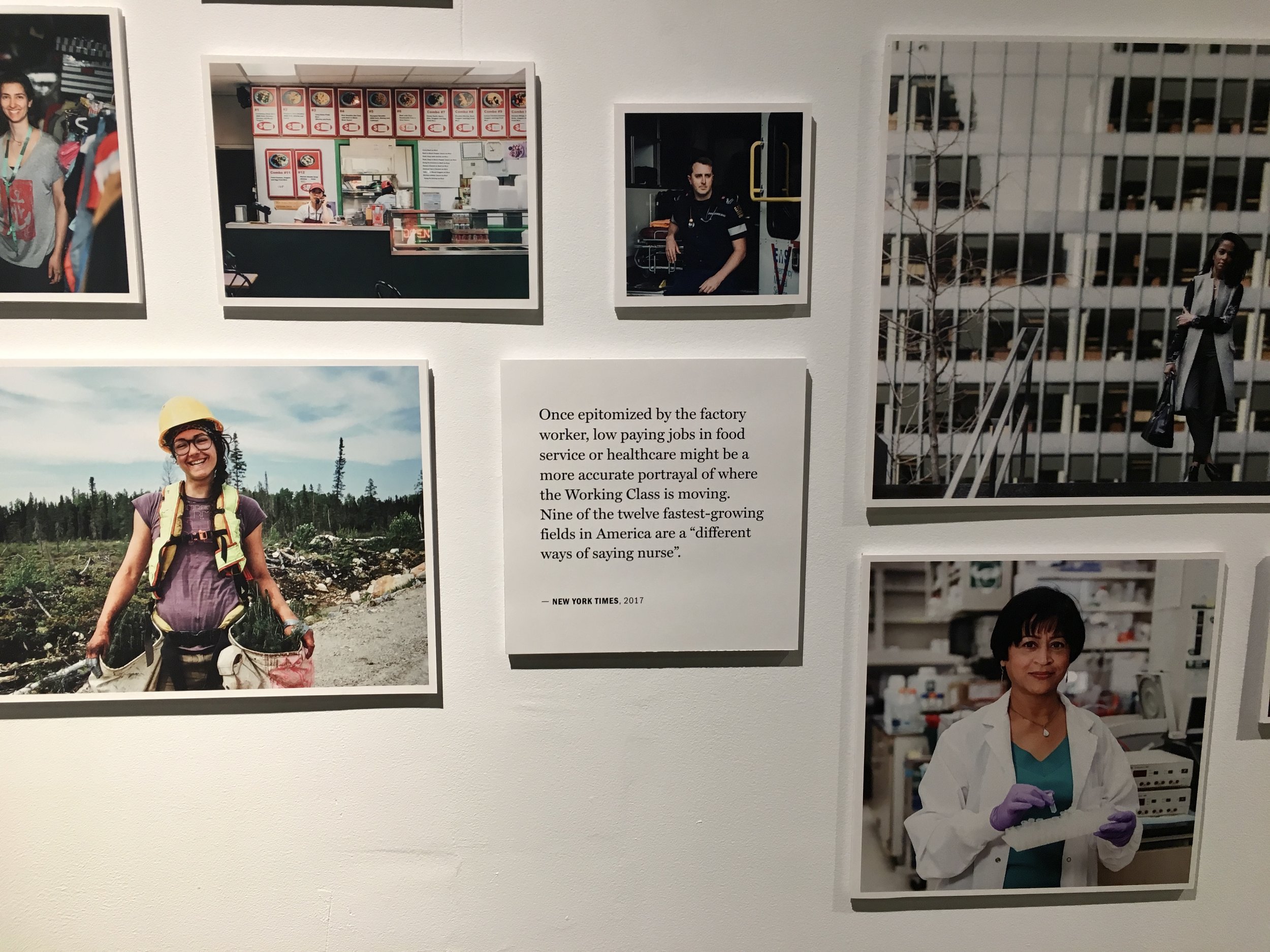A precarious pop-up exhibit.
The Museum of Contemporary Work is an exhibit exploring the recent past, present and future of work through physical objects. The artifacts displayed, both real and fictional, connect themes like identity, inequity, meaning and motivation. Some have all but disappeared from the workplace. Others are re-emerging as souvenirs. Some are tools. Others inspirational tokens. Each is a symbol of the invisible forces at work in our work. They tell stories of how our daily labours are changing; and how they are changing us.
Upcoming
January 19 - February 17, 2024
Collision Gallery, 30 Wellington St. West
Toronto, Canada
Wed 12-2, Thurs-Saturday 12-6
Past Exhibitions
The MoCW first ran in a hidden space in downtown Toronto, Canada in the summer of 2017. The following year it showed at DesignTO and was awarded 2018’s Best In Festival. It has been on sabbatical since.

Photography: Mike Palmer, Roaming Focus
The idea for the Museum of Contemporary Work was conceived by Sean Hazell and produced with the help of Stephanie Wan, Derek Last and Julie Do. Prior to the first showing Sean did an interview with Stimulant on the origins of the concept. Portions of that interview are extracted below.
—
[A History of Work In Objects; Stimulant, June 12, 2017]
Where did the idea for the Museum of Contemporary Work come from?
I’ve been interested in work for as long as I can remember. It’s one of the topics where the deeper you go, the more complicated it seems. Kind of like parenting, there are too many experts and they all contradict each other.
The idea was sparked after reading piece after piece on the effects of digital disruption. I was thinking a lot about the relationship between work and identity — and what we might be losing with dematerialization. Physical artifacts felt like an interesting way to explore the changing landscape and connect a bunch of disparate themes I kept seeing pop up.
How did you go about choosing and finding the items to display?
It’s been a very organic approach to sourcing. There are a few ideas I’ve wanted to cover from the start. But the show is self-funded so we’ve had to be opportunistic. Option A has been beg, borrow and steal. EBay has also been a treasure trove for older items. We’ve pulled everything from a 1951 GM Employee Handbook to a set of 1972 Pabst employee poker cards.
One fascinating bit for me has been interacting with this cottage industry of eBay sellers and micro retailers. They’re scattered around North America, often in very remote areas, and they’ve got their own brands, business cards and letterhead; their service etiquette is really impressive. The fact that a secondary industry exists where somebody from rural Connecticut is hustling to sell me a 1940 “pink slip” for $1.70 — that’s a signal in its own right.
Why do you find these objects interesting? What do they tell us about work today?
These things might come off as mundane or even junky to some people. But to me they’re all part of a bigger story. As a standalone, a 2.5-inch Steve Jobs figurine is pretty ordinary, if not silly. But if you think about it as a symbol of how we’ve come to glorify entrepreneurship, it takes on new meaning.
As a whole, the items tell the story of how much has changed and how much remains the same. The job market looks hugely different from a few decades ago. But the need for belonging and a sense of purpose hasn’t changed much at all.
We used to make things. Now we offer services. As a strategist [in my day job], I provide professional services and primarily “make” documents that disappear into digital folders. That can make you question what you’re doing with your days — and if I’m honest is probably a large motivator in me wanting to create this show.

